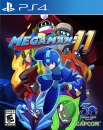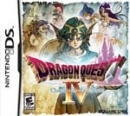Chrkeller said:
Soundwave said:
You're not getting something that is going to be like 7-8x more powerful than a Switch OLED for the same $350 in one year.
I don't see it.
It's going to be $399.99 minimum, I would not be surprised if a $449.99 SKU with higher storage (256GB?) might be in the cards also. Digital purchases are a big deal now, whereas for like the Wii U it was sort of a "so what?" ... most people still bought physical back then and because the Wii U wasn't portable you could just plug in a flash drive or HDD and leave it there with no fuss.
For Switch 2, having more storage is kind of a big deal as many people are digital only and the game sizes are likely to increase next gen given the Switch 2 is going to be somewhere between a PS4++ in power with a feature set that is more like a PS5 (Ampere based Nvidia chips are a better architecture than the AMD crap the PS5/XBS use).
$399-$450 is perfectly acceptable. The Super NES today would be over $400, the N64 right around $400 with inflation. You can't just compare to the freaking Game Boy and GBA forever. The Switch 2 is a *console* too, unless you are just revising history and making it so the Game Boy Advance was a home console that would hook up to the TV and was capable of running Nintendo's console games (funny I don't remember ever playing Metroid Prime or Super Mario Sunshine or Resident Evil 4 on the GBA, do you?). You have to compare to the home consoles in terms of pricing.
The Switch 2 will be able to play the newest mainline 3D Mario, Mario Kart, next-gen Zelda, Smash, etc. on top of some modern 3rd party games like probably Street Fighter VI, Call of Duty, EA FIFA/FC, Witcher 4 (?), and Dragon Quest XII among others (I wouldn't be surprised at all with a Final Fantasy XVI port, Square-Enix needs the $$$). You can't just sit there and say "price it like a Game Boy or DS please", like that's fucking bonkers.
For people who can't afford $350+ or are young children and the parents don't want to spend big on their gaming consumption, there's going to be eventually a product for you -- it's called Switch 2 Lite ... just like Switch Lite exists for that market right now. You'll be waiting a few years for that.
|
Everyone is entitled to their opinion and time will tell who's predictions are accurate. I personally don't expect anything near 8x more powerful for the switch 2.
|
7-8x is fairly standard upgrade ... the 3DS is 7x-8x more powerful than the DS, the DS was even more over the GBA, the GameCube was a similar kind of leap over the N64, the N64 to the SNES is even bigger than that, etc. etc. etc. The only time they've had successive hardware without a large leap forward was GameCube to Wii, and then Wii to Wii U was again 7-8x more powerful.
So if you really want to play the whole "well this is how Nintendo historically operates" card, you're kind of playing yourself, every hardware generation they've gone up has been a full generational leap with only one exception (GCN to Wii). All their portable machines have been a full generational leap (which is typically 6-9x power improvement). GB - GBA - DS - 3DS - Switch, Switch is obviously more than 7x the 3DS but even the previous machines are all large leaps over the predecessor.
What we know about the Tegra T239 (the chip tipped by a reliable Nvidia leaker as being the Switch 2 chip and this chip also shows up in leaked firmware from Nvidia and corresponds to a graphics API called NVN2 ... why is that significant? Because the Switch 1's graphics API is -- you guessed it -- NVN) is that it is a full generational leap from the Tegra inside the current Switch. This is part of the reason why I doubted a Switch Pro because that chip is way too powerful for a "Pro" model.
For those curious, here are some power estimates of this chip clocked at different speeds, you can see roughly where it would perform if this chip was clocked the same as the current Switch 1 (courtesty of poster Zombie at Famiboards):
Portable
400MHz ->1.228TFLOPs
500MHz ->1.536TFLOPs
600MHz ->1.843TFLOPs
Docked
768MHz (Switch docked clock) ->2.36TFLOPs
1GHz -> 3.07TFLOPs
1.152GHz -> 3.539TFLOPs
1.3GHz -> 3.993TFLOPs
1.5GHz -> 4.6TFLOPs
1.8GHz -> 5.53TFLOPs
2GHz -> 6.14TFLOPs
The current Switch 394 GFLOPS, so that is at least a 6x increase, but you have to factor in the original Tegra X1 was produced on a very inefficient 20nm node that ran very hot (the chip is capable of 500 GFLOPS but Nintendo underclocks it even in docked mode for heat concerns). The above chip, Nintendo could likely clock higher as it's probably on a much better 5nm manufacturing process (runs much cooler).
Last edited by Soundwave - on 28 August 2023























































